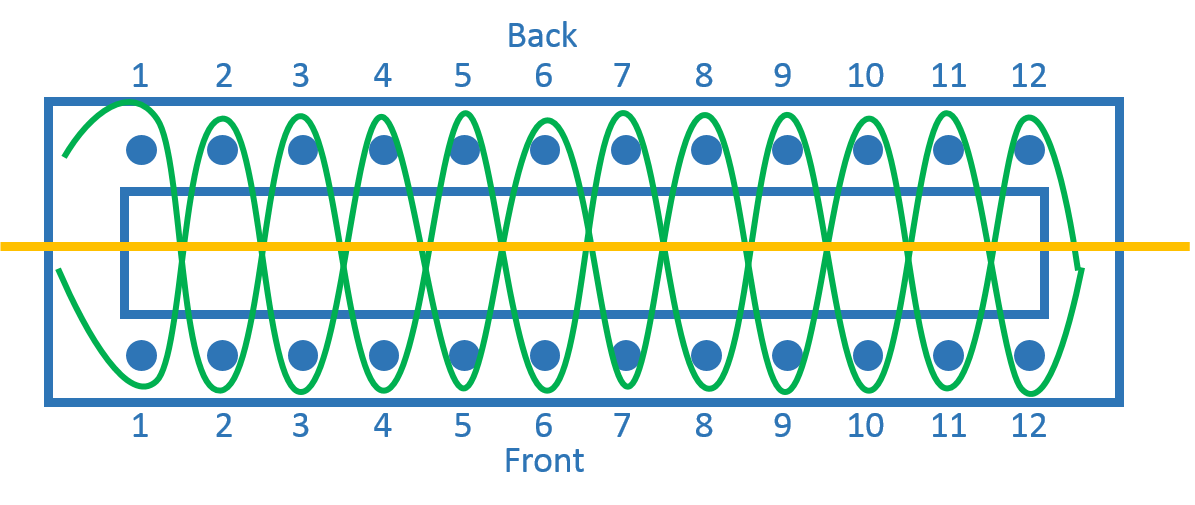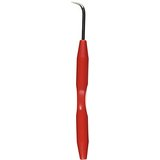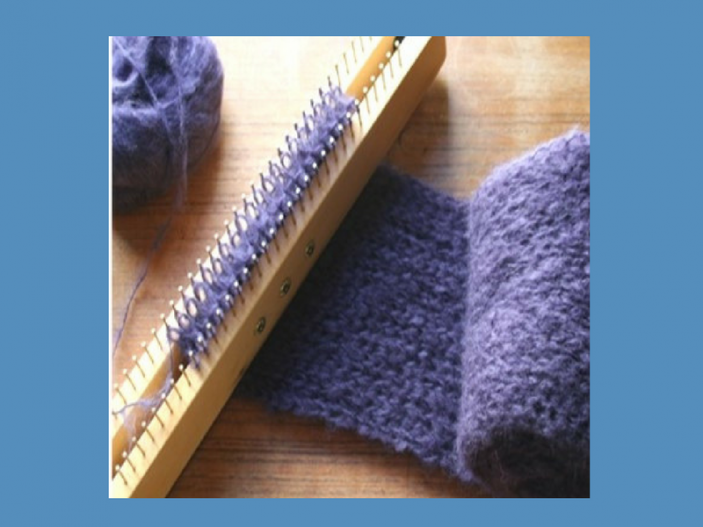As Loom Knit Central continues to grow with a variety of content covering patterns, stitches and how-to videos directed at established double-knit loom knitters, I thought I’d step back and address those who may be new to double-knit loom knitting.
Knitting Loom Types
There are different types of looms: round looms as well as rectangular looms. When using a round loom, you are using the “single knitting” technique. When using one side of the rectangular loom, you are also using the “single knitting” technique. When you use both sides of the rectangular loom, you are using the “double-knit” technique. Loom Knit Central focuses on the “double-knit” technique.
There are a plethora of sites and how-to videos dedicated to the “single-knit” technique – just do a Google search or tap into Pinterest and you’ll find plenty. For “double-knit” technique, there just aren’t that many dedicated sites or basic how-to’s for beginners, so I thought I’d shed a little light.
There are plenty of choices when choosing a rectangular loom, however, some looms are more versatile than others. Here’s the breakdown:
 Plastic looms come in a variety of sizes, are pretty economical on your budget and are easily found at any craft store as well as Amazon. These are great to learn on and create larger-stitched projects such as scarves and blankets using medium weight yarn (and above). The downside is that you cannot adjust the width of the loom which allows for smaller stitches when using lighter weight yarn.
Plastic looms come in a variety of sizes, are pretty economical on your budget and are easily found at any craft store as well as Amazon. These are great to learn on and create larger-stitched projects such as scarves and blankets using medium weight yarn (and above). The downside is that you cannot adjust the width of the loom which allows for smaller stitches when using lighter weight yarn.
 Wooden looms, such as this one from Authentic Knitting, also come in a variety of sizes. The beauty of these is that the width is adjustable, depending on the weight/thickness of the yarn you will be using for your projects, which allows for more flexibility in the projects you choose to work on.
Wooden looms, such as this one from Authentic Knitting, also come in a variety of sizes. The beauty of these is that the width is adjustable, depending on the weight/thickness of the yarn you will be using for your projects, which allows for more flexibility in the projects you choose to work on.
These can also be found at your favorite craft store as well as at the Authentic Knitting site and Amazon. Since these are a bit more pricey, you may want to consider waiting for one of those awesome 50% off coupons at Michael’s or Jo-Ann’s when deciding to purchase!
Casting On
To cast on, start with with a slipknot and place on the first pin on the back board. Then wrap your yarn to the front 2nd pin and continue back to front every other peg:

Once you reach the end, turn your board and continue wrapping the empty pins until all are wrapped:

Lay a long piece of yarn down the center of the board. This is called the “anchor yarn”.

Repeat the above wrapping instructions. You’ll now have two stitches on each pin.
Using your hook tool,  hook the bottom stitch over the top stitch and pin, leaving one stitch left on the pin. Continue hooking over all stitches until there is only one stitch left on each pin. You have completed casting on and can now continue with whichever stitch you would like. There are plenty of stitches to choose from and you can find the most common here.
hook the bottom stitch over the top stitch and pin, leaving one stitch left on the pin. Continue hooking over all stitches until there is only one stitch left on each pin. You have completed casting on and can now continue with whichever stitch you would like. There are plenty of stitches to choose from and you can find the most common here.
There are plenty of instructional videos to help you with stitches and technique. Check out Loom Knit Central’s video page here.
Loom Knitting is not only enjoyable but the possibilities are endless as we learn more techniques and applications. My favorite reason for loom knitting? No more dropped stitches and crooked edges!!
Have a question or comment? Let us know in the comments below! We are all here to help and encourage each other.



Erin on
Hi Chris! Quick question – and I apologize if it has already been answered somewhere else.
Once of my gripes with some of my loom projects is that the stitch is way too loose for my liking. I had been using the Authentic Knitting Board with the spacer turned in to make the sides of my board as close as possible, them I use hair elastics to tighten the board together since the screw doesn’t have threading that far down to help the nut stay in place.
I saw your comment that you use washers to space, but I was wondering what weight yarn you use. I recently finished up a merino wool scarf with #11 yarn, and I felt like the knit was STILL too loose, even using my rigged up AKB! Thanks for your help!
Chris on
Hi Erin! Well, when using the Authentic Knitting Board with the metal pins, I use washers instead of the spacer that it comes with. With the Knitting Board with the plastic pegs, I use the spacer at the smallest (a little more than 1/4″). I use my yarn as my guide: I want the space just large enough for the double-knit project to slip through the gap easily, but no more. I also use the longer bolts which have threading that far.
The only way we can get very tight, small stitches is to have a loom with less space between the pegs as well as a smaller gap. Hmmmm….methinks Loom Knit Central may have something up its sleeve for the new future… 🙂
Tara Meade on
I was attempting my first baby blanket on a 28 inch kb loom. I found that the center was too tight and the edges too loose. The center was so tight the pegs were bowing in. How can I prevent this?
Thanks, Tara
Chris on
Hi Tara! When hooking over, try staggering your hooking – hook over once on the right side, then move to the left side and hook over, then one in the center, etc. This way, you are distributing the pull of the stitches across the board. Once I started staggering, the issues with too tight/too loose disappeared! Chris
Becky on
I am doing the double knit stitch on my green loom but I would like to know how I can tighten the first row or try to crochet and fix it that way?
Chris on
Hi Becky,
You can try and tighten it when you bind off. However, if this is your first time, you can repair it with crochet (actually, use that anytime). Once you get used to loom knitting, the starting stitches become easier and won’t be so loose.
Chris
Michelle on
This is super helpful. I’ve only doubled knitted a scarf, which came out perfectly, but now I want to make a poncho From a purchased pattern and was confused about how far to space the gap between the two boards. Your answer To someone up in the comments About the yarn weight Determining the gap size answered my question!
Thank you for this site! It is hard to find info about double knitting. I will buy your book soon!
Chris on
I’m so glad you found it helpful and so happy you found us!
Happy Looming!
Chris